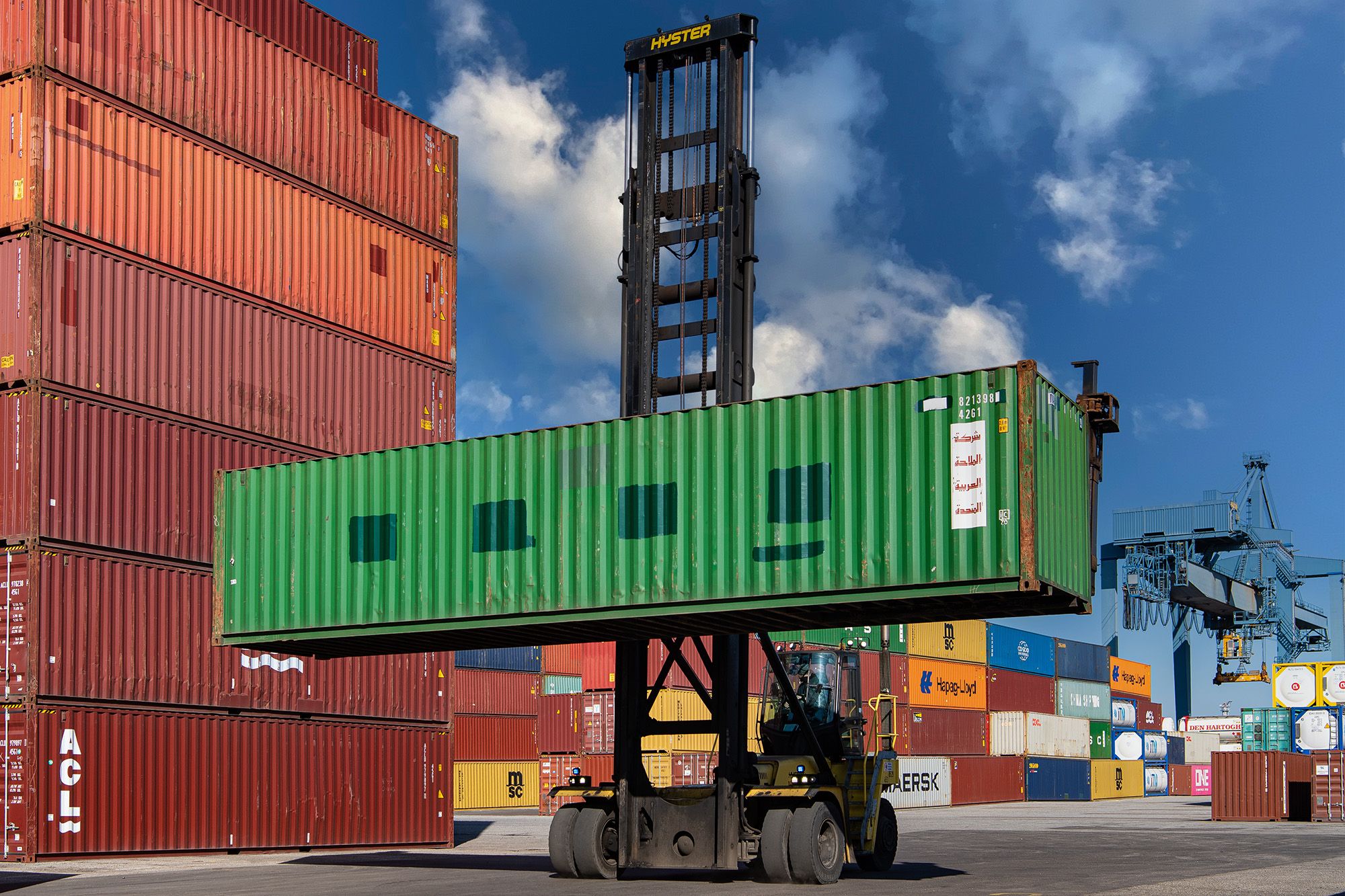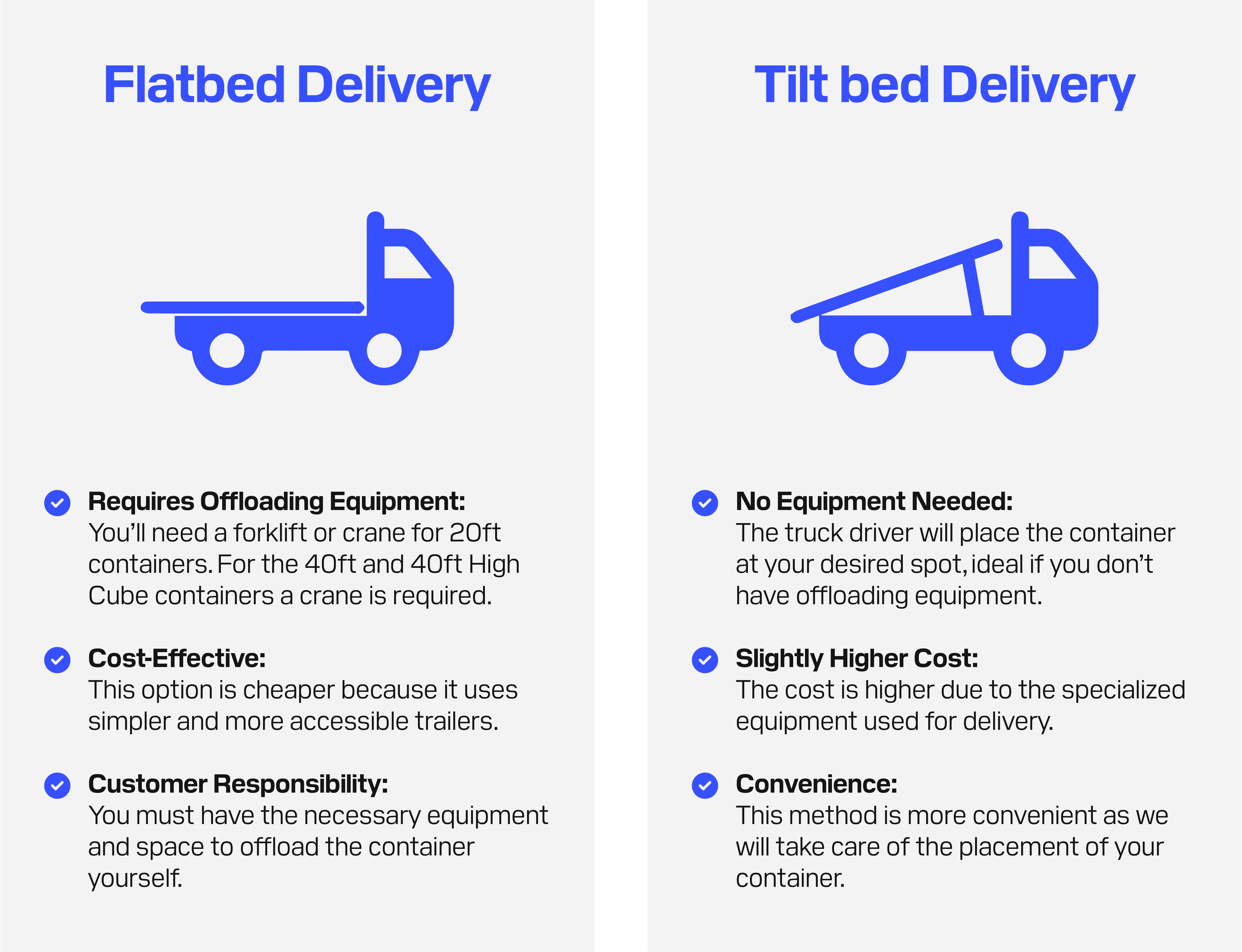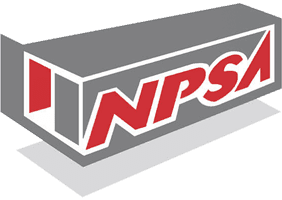SEASONS GREETINGS! $200 OFF PER CONTAINER THRU 12.31 🎄
Everything You Need to Know About Flatbed Delivery for Used Containers
Eveon Containers offers both tilt bed and flatbed delivery service. Let's dive into the details to help you understand the differences, what to expect and what option is best for you.


What is Flatbed Delivery?
Flatbed delivery involves transporting your container on a flatbed trailer, which differs from the tilt bed method where the container slides off the back of the truck onto the ground. With flatbed delivery, you're responsible for offloading the container using appropriate equipment like a forklift or crane.
One benefit of flatbed delivery is its cost-effectiveness, using simpler and more accessible trailers and placing the offloading responsibility on you.

Who is Flatbed Delivery Suitable For?
Flatbed shipping offers a versatile solution that caters to various needs:
1. Businesses with Equipment: Flatbed delivery is particularly advantageous for businesses equipped with forklifts or cranes, as these tools are essential for offloading containers delivered via flatbed.
2. Restricted Access Areas: Flatbed shipping is suitable for delivery to locations where a tilt bed truck may face clearance issues, ensuring containers can be efficiently delivered even in constrained spaces.
3. Cost-Conscious Customers: Customers who prioritize cost savings and have access to the necessary offloading equipment will find flatbed shipping to be a cost-effective choice for their container delivery needs.
Moreover, flatbed shipping ensures a swift delivery turnaround, typically completing within 3-5 business days, making it a prompt and reliable option for those seeking efficient storage solutions.
Is Flatbed Delivery Suitable for All Containers?
Flatbed delivery is suitable for all container sizes, but the key requirement is having the appropriate offloading equipment ready and accessible at your site.
20ft Containers come with forklift pockets, making them perfect for offloading with a forklift. Crane offloading is also possible.
40ft and 40ft High Cube Containers do not have forklift pockets and require offloading by a crane and a certified operator to ensure safe and efficient handling.
Delivery Requirements for Flatbed Service:
Ensure that there is at least 12 feet of width for the truck to maneuver, similar to tilt bed delivery, allowing easy access to your location without obstructions..
1. Ensure Sufficient Space: Make sure there is enough space on your property for the delivery truck to access. Measure the available area and consider factors such as the container size and the maneuvering space required by the truck.
2. Clear Obstructions: Clear your driveway or property of any obstacles that may block the truck's access. Remove parked vehicles, bicycles, or other items that might obstruct the path.
3. Check Entrance Width: Assess the width of the entrance, considering any fences, trees, or structures that may limit the truck's passage. Ensure the entrance is at least 12 feet wide for the truck to access. If unsure, share photos or videos of the delivery location with us or the driver before delivery.
4. Offloading Equipment: Ensure your offloading equipment is prepared and positioned safely for container offloading. Verify that your crane or forklift can handle a minimum weight of 5,500 lbs for 20ft containers and 10,000 lbs for 40ft and 40ft HC containers. Also, be mindful of the offloading window, providing 90 minutes to complete the offloading process.
By choosing a flatbed delivery at Eveon Containers, you're opting for cost-efficiency, personal service, and a reliable delivery process. Whether you're a business looking to expand storage capacity or a homeowner embarking on a renovation project, our team is here to ensure your container delivery is smooth and hassle-free.
Check your price and flatbed delivery rate in our webshop. If you have any questions or need further assistance, feel free to reach out to our dedicated customer service team. We look forward to serving you with our new flatbed delivery option!

